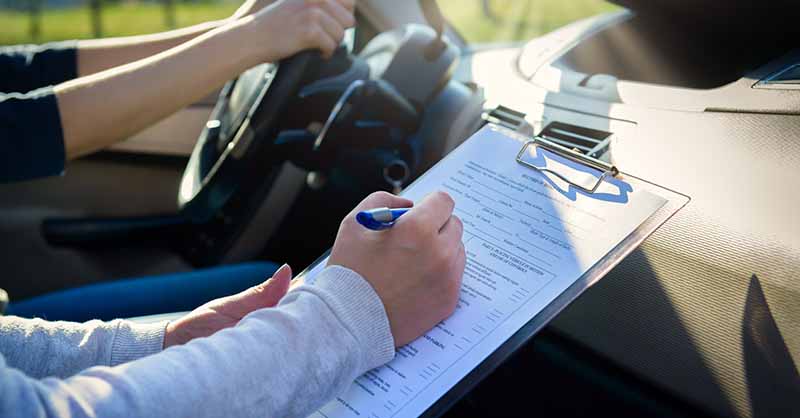Improving Driver Selection with Road Tests

Road tests are designed to assist with the overall driver selection process and to evaluate safe driving performance. A course of approximately 10 to 12 miles including city, rural and interstate driving is utilized for the road test. A driver is shown a map of the route and is given time to become familiar with the vehicle before the test begins.
The following are suggested areas that should be evaluated by a qualified driver during the road test.
Inspection of equipment
Be sure the driver does the following while driving.
- Makes visual check of vehicle including lights and reflectors, tires, coupling devices, air lines and trailer hookup.
- Familiar with starting procedure.
- Checks brakes, steering mechanism, horn, windshield wipers and adjusts mirrors.
- Checks air pressure, instruments and tractor protection valve.
Intersections
- Approaches intersections at a speed where vehicle could stop if necessary.
- Stops soon enough to avoid running over crosswalk.
- Does not allow vehicle to roll or creep while waiting for traffic lights.
- Brings vehicle to full stop at stop signs.
- Checks cross traffic regardless of traffic controls.
Passing
- Does not attempt to pass when traffic is moving at posted speed.
- Maintains proper following distance, does not tailgate awaiting chance to pass.
- Does not attempt to pass without adequate passing distance.
- Does not pass on hills, curves, intersections or railroad tracks.
- Allows adequate clearance before pulling back into right lane.
Coupling and uncoupling tractor trailer units
- Lines up units properly.
- Makes sure lines are clear.
- Makes sure trailer is secure.
- Backs under slowly.
- Checks hookup visually.
- Handles landing gear properly.
Vehicle operation, straight road
- Checks traffic conditions before pulling into traffic.
- Drives with both hands on the wheel.
- Stays in traffic flow.
- Maintains proper speed within posted speed limits but not too slow.
- Signals intent before changing lanes.
- Maintains proper following distance.
- Brakes smoothly and uses engine to reduce speed by shifting to lower gears.
Turns
- Approaches intersection in proper lane.
- Begins turn signal at least 100 feet from the corner.
- Checks position of other vehicles well in advance of turn.
- On right turns makes allowance for off-track or back end cutting short.
- While waiting to make left turns has wheels pointing straight ahead.
- Maintains proper lane during turns.
Backing and parking
- Stops in correct position to back.
- Gets out of cab and checks to rear and sides if necessary.
- Backs slowly and smoothly without excessive use of clutch or brake.
- Makes full use of mirrors.
- Chocks trailer at loading docks.
- Parks off pavement and secures vehicle before leaving.
General habits
- Is alert and aware of changing traffic conditions.
- Adjusts driving to meet changing traffic conditions.
- Performs routine functions without taking eyes from road.
- Displays self-confidence in driving.









.jpeg?sfvrsn=dbf923b1_1)




.jpeg?sfvrsn=c50521b1_1)